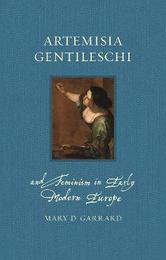
|
Artemisia Gentileschi and Feminism in Early Modern Europe
Hardback
Main Details
Description
A beautifully illustrated, full portrait of Artemisia Gentileschi, a ground-breaking medieval woman artist who fought back through her art. Artemisia Gentileschi is by far the most famous woman artist of the pre-modern era. Her art addresses issues that resonate today, such as sexual violence and women's problematic relationship to political power. Her powerful paintings with their vigorous female protagonists chime with modern audiences, and she is celebrated by feminist critics and scholars. This book breaks new ground by placing Gentileschi in the context of women's political history. Mary D. Garrard shows that Gentileschi most likely knew or knew about contemporary writers such as the Venetian feminists Lucrezia Marinella and Arcangela Tarabotti. She discusses recently discovered paintings, offers fresh perspectives on known works and examines the artist anew in the context of feminist history. This beautifully illustrated book gives a full portrait of a strong woman artist who fought back through her art.
Author Biography
Mary D. Garrard is Professor Emerita of Art History at American University, Washington, D.C. Her books include Artemisia Gentileschi: The Image of the Female Hero in Italian Baroque Art (1989) and Brunelleschi's Egg: Gender, Art and Nature in Renaissance Italy (2010).
Reviews"No in-depth study of Artemisia's artistic achievements can ignore the fact that Artemisia was a woman in a man's world. Placing Artemisia's life and work in the context of early modern feminism, Garrard's handy-sized book builds on her ground-breaking study Artemisia Gentileschi: The Image of the Female Hero in Italian Baroque Art (1989). . . . Her feminist perspective frequently offers considerable food for thought." -- Jose da Silva * Art Newspaper, "Five Must-Read Books on the Italian Artist" * "Compelling. . . . There's not a little irony in reading Garrard's lively account of a seventeenth-century artist's life wherein plague is plentiful-Artemisia likely died of it-when a plague (or at least pandemic) is back on the table. How strange that a book about the late Renaissance and Baroque would now prove so very much of our time. It's timely in the sense of the aforementioned deadly and contagious illness, but also features tyranny, religious persecution and reaction. And it is timely in its exploration of feminist outrage at patriarchal power, of men's control over women's bodies, and in the exploration of an art of anger, accusation, and even great wit. It's a lot and it's awesome. . . . Much more than an exploration of a singular female artist of the Italian Baroque, it's a map of interconnected traditions, intellectual conversations, inspirations and leapfrogging, a whole network of early modern European feminists in conversation with one another, and with us, across time." -- Bridget Quinn * Hyperallergic * "Garrard's return to the great Artemisia Gentileschi is uniquely rich in knowledge and reflection. It is not only an authoritative study of the historical Artemisia and the ways-whether openly brutal, subtly injurious, or beneficial-in which her art and life were affected by her sex. It also places her in the 'transhistorical community of women' that Garrard brings to life. The book is moreover a heartfelt appeal to writers and readers of art history to account for their own attitudes and experiences. And with all that, it is a pleasure to read." -- Gary Schwartz, art historian "Garrard's exciting new book on the Italian painter Artemisia Gentileschi marks another formidable contribution to the field by this groundbreaking scholar. Garrard weaves a rich tapestry of women's voices, arguing that the shared vision of remarkable women of the period reflects a pervasive and influential feminist phenomenon in Europe. This book will provide a provocative source for understanding the pan-European phenomenon of what Garrard aptly terms the 'woman on top.'" -- Babette Bohn, Texas Christian University, author of "Women Artists, Their Patrons, and Their Publics in Early Modern Bologna"
|